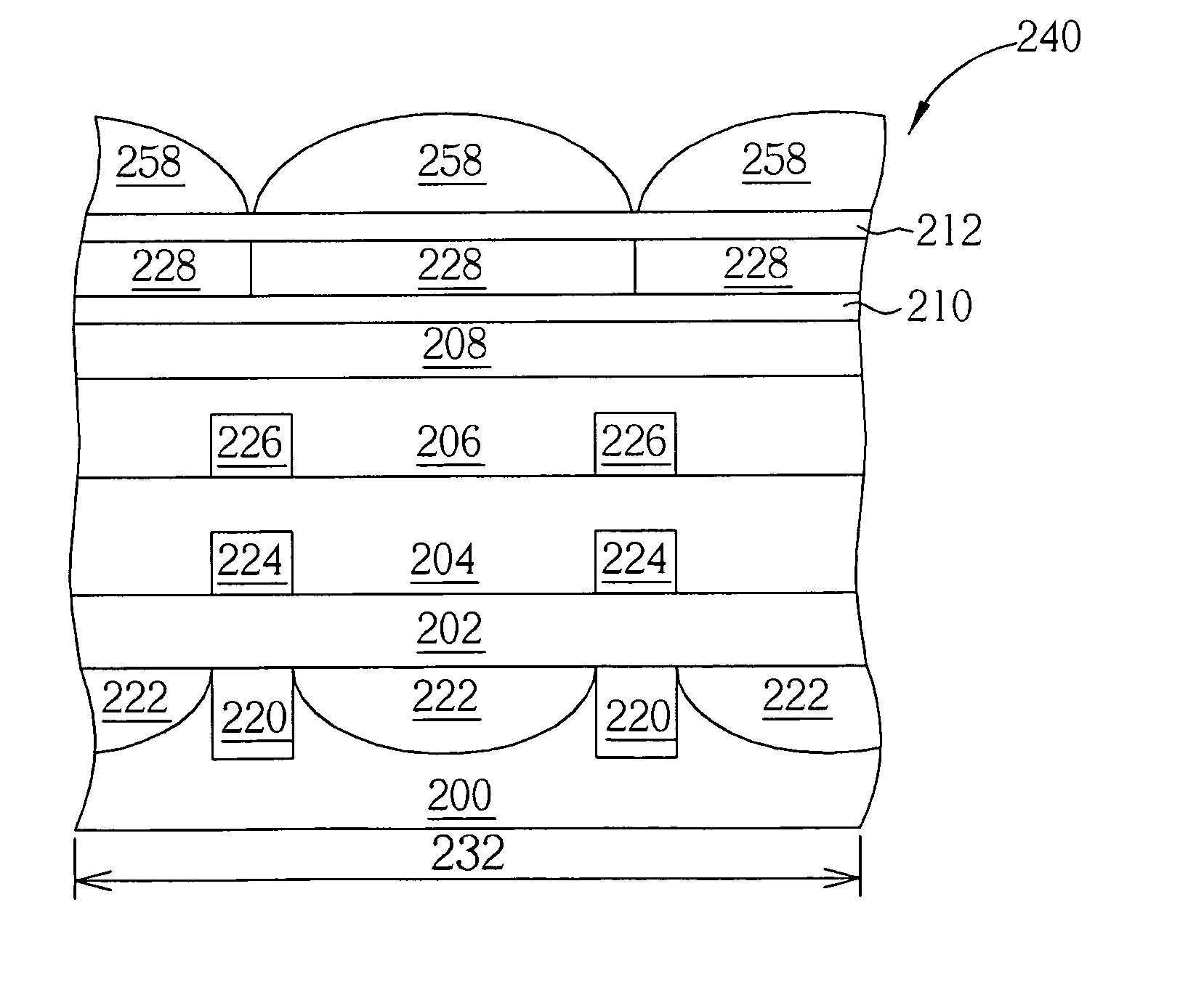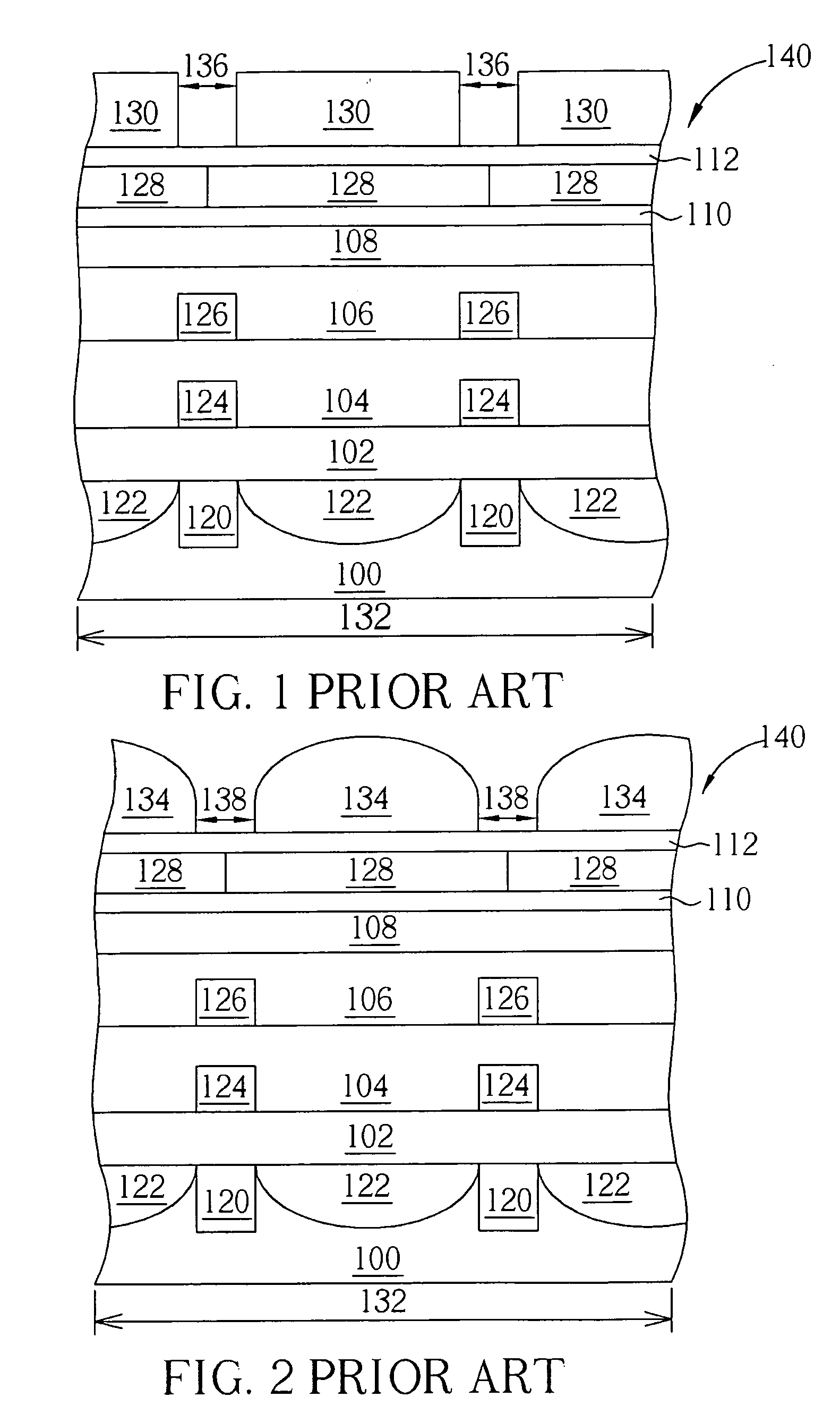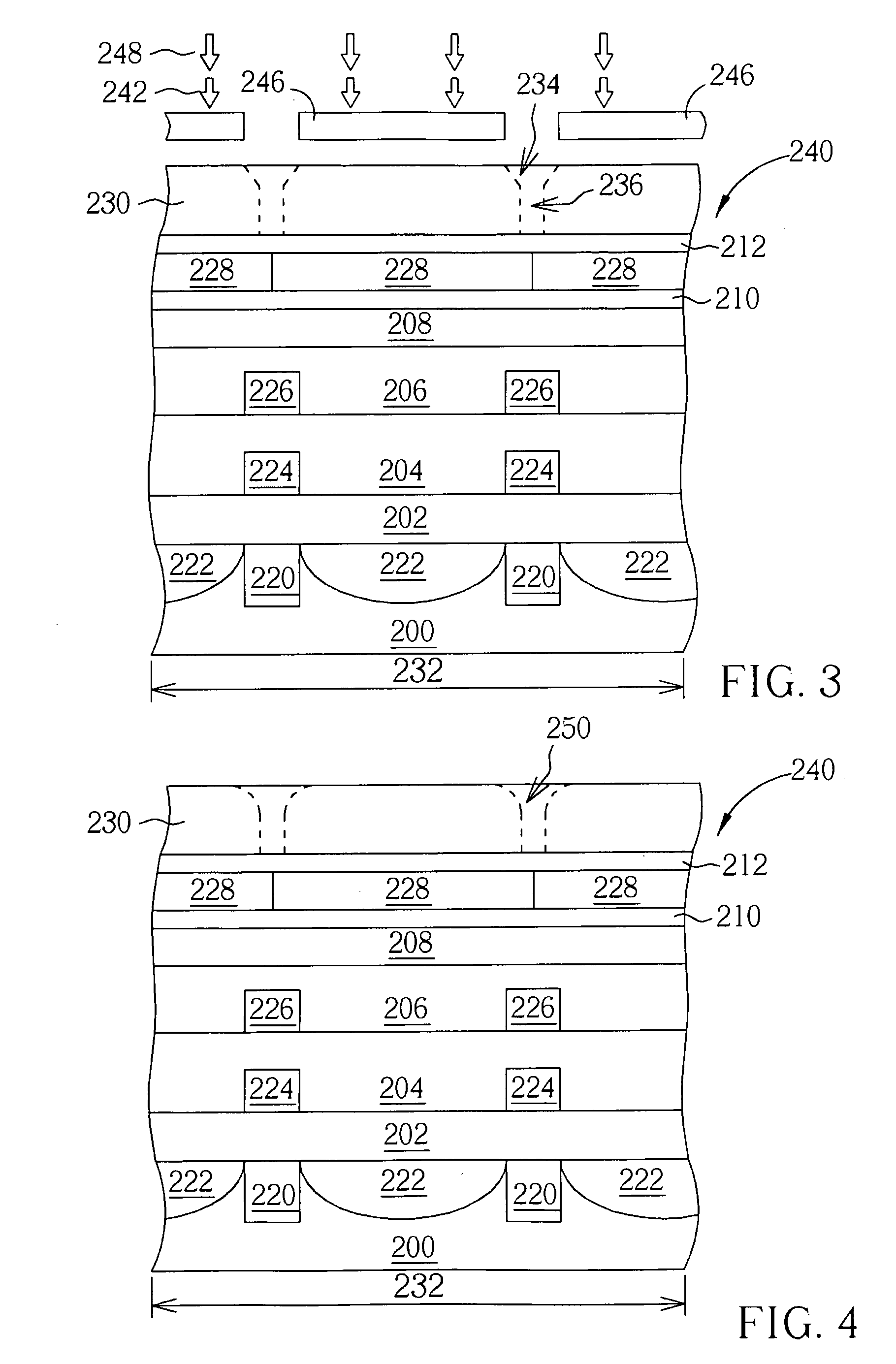Method for fabricating an image sensor
- Summary
- Abstract
- Description
- Claims
- Application Information
AI Technical Summary
Benefits of technology
Problems solved by technology
Method used
Image
Examples
Embodiment Construction
[0018]Referring to FIGS. 3-6, FIGS. 3-6 are perspective views illustrating a method for fabricating an image sensor 240 according to a preferred embodiment of the present invention. As shown in FIG. 3, a semiconductor substrate 200 is provided, in which at least a photosensitive region 232 is defined on the semiconductor substrate 200. A plurality of photodiodes 222, CMOS transistors (not shown), and shallow trench isolations 220 surrounding the photodiodes 222 are formed on the semiconductor substrate 200. Each of the photodiodes 222 is electrically connected to at least one of the transistors, and the shallow trench isolations 220 are used as an insulator between two adjacent photodiodes 222 for preventing short circuit.
[0019]Next, a planarizing layer 202 is deposited on the photodiodes 222 and the transistors, and a plurality of dielectric layers 204, 206 and patterned metal layers 224, 226 are formed on the planarizing layer 202. The metal layers 224 and 226 are formed on top of...
PUM
 Login to View More
Login to View More Abstract
Description
Claims
Application Information
 Login to View More
Login to View More - R&D Engineer
- R&D Manager
- IP Professional
- Industry Leading Data Capabilities
- Powerful AI technology
- Patent DNA Extraction
Browse by: Latest US Patents, China's latest patents, Technical Efficacy Thesaurus, Application Domain, Technology Topic, Popular Technical Reports.
© 2024 PatSnap. All rights reserved.Legal|Privacy policy|Modern Slavery Act Transparency Statement|Sitemap|About US| Contact US: help@patsnap.com










